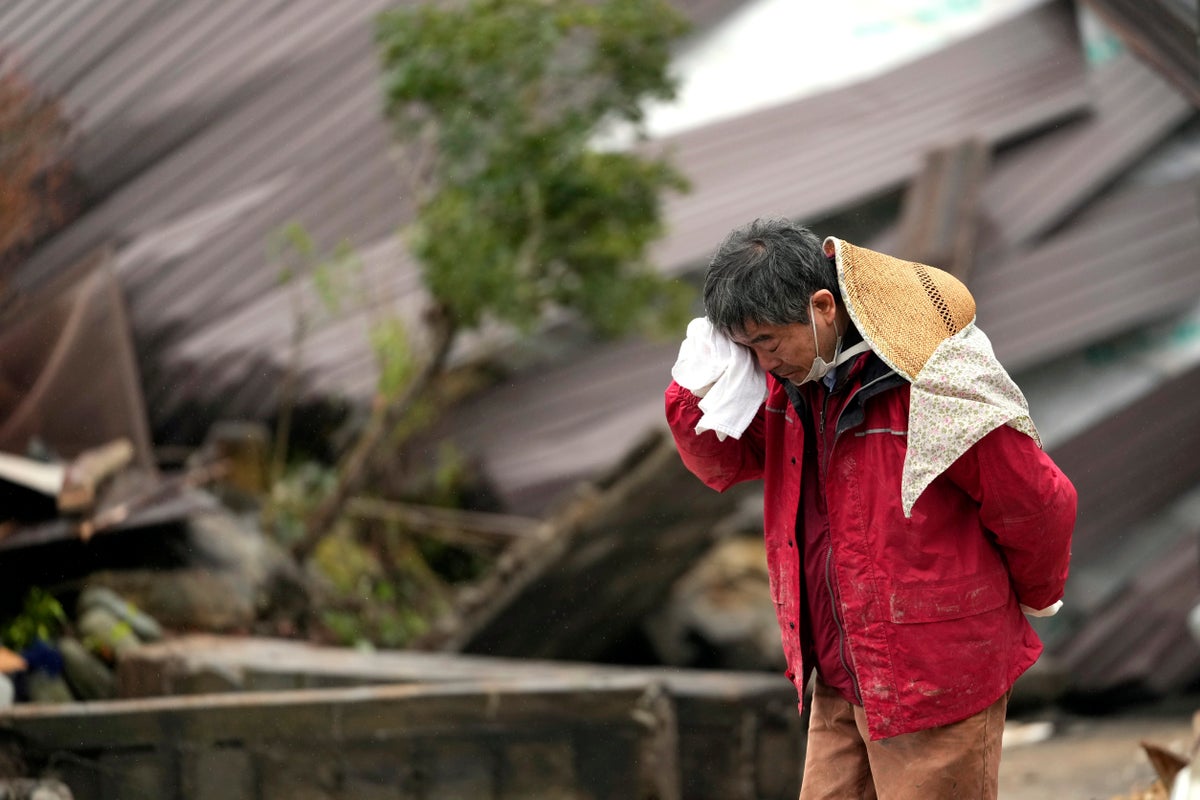
Rescue workers and canine units urgently sifted through rubble in the winter cold Wednesday in what the prime minister called a race against time after powerful earthquakes in western Japan left at least 62 people dead and dozens believed trapped under collapsed buildings.
Ishikawa prefecture and nearby areas were rattled by a major 4.9 magnitude aftershock in the early hours among the dozens of aftershocks that have followed a magnitude 7.6 temblor two days ago.
The first 72 hours are especially critical, experts say, because the prospects for survival greatly diminishes after three days.
“More than 40 hours have passed. This is a race against time, and I feel that we are at a critical moment,” Prime Minister Fumio Kishida told reporters. “We have received reports many people are still waiting for rescue under collapsed buildings.”
Relief officials were delivering water, blankets, food and other supplies. Noto’s narrow peninsula landscape has added to the challenges in reaching some communities. Water, power and cell phone service were still down in some areas.
“Hardly any of the homes are standing. They are either partially or totally destroyed,” said Masuhiro Izumiya, the mayor of Suzu city, which suffered heavy damage.
Besides the military and firefighters, search dogs have joined the effort to search for dozens of people who are thought to be trapped, although the exact number is unclear.
Weather forecasts warned of heavy rainfall in Ishikawa, leading to worries about landslides and further damage to half-crumbled homes. Temperatures were also dropping lately to below freezing levels.
Of the deaths, 29 were counted in Wajima city, while 22 people died in Suzu, according to Ishikawa Prefectural authorities. Dozens of people have been seriously injured, including in nearby prefectures. Two additional deaths were still awaiting official confirmation in Wajima, meaning the overall toll would likely grow to 64 people.
Ensuring adequate water supplies and bathroom services to those who have evacuated were a priority, according to Ishikawa Gov. Hiroshi Hase.
He encouraged everyone to use masks, antiseptic and soap to guard against the spread of infectious diseases, another growing fear the region faces as life at evacuation centers drags on.
But residents on the coastline were already picking up the pieces, like Noto resident Kazuyuki Iwaike, who was deep in thought as he cleaned up his home. It was by sheer chance he had avoided death. He was not home when the tsunami struck.
“I always thought it was someone else’s problem, thinking there is no way a tsunami would come,” he said.
Officials warned that things were unpredictable and possibly bigger quakes could hit.
As a quake-prone nation with crisscrossing fault lines and many volcanoes, Japan has had its share of disasters, including a quake, tsunami and nuclear disaster in northeastern Japan in 2011.
Japan is also an organized, conformist and relatively crime-free society, where warning systems are systematically relayed as a public service. Disaster experts say that’s helping save lives, but they warn people shouldn’t let their guard down.
Boats lay overturned in water, roads were blocked by mounds of dirt, and shovels scooped scattered pillars and walls from flattened homes. A major fire turned an entire section of Wajima city into ashes.
Adding to the worries are the several nuclear plants in the region, although no major problems or rise in radiation levels have been reported. Shika nuclear plant in Ishikawa suffered partial electricity failure, but backup power kicked in, ensuring the critical cooling process continued.
On Monday, the Japan Meteorological Agency issued a major tsunami warning for Ishikawa and lower-level tsunami warnings for other coastal areas. The tsunami warnings were lifted Tuesday. The latest quakes have not come with tsunami warnings.
Australian Prime Minister Anthony Albanese joined President Joe Biden and other world leaders in expressing empathy for the Japanese.
“Our hearts go out to our friends in Japan,” he said. “We will provide, and have offered, whatever support is requested by our friends in Japan.”
___
Kageyama reported from Tokyo. Richard Columbo in Suzu, Haruka Nuga in Bangkok and Rod McGuirk in Sydney contributed.







